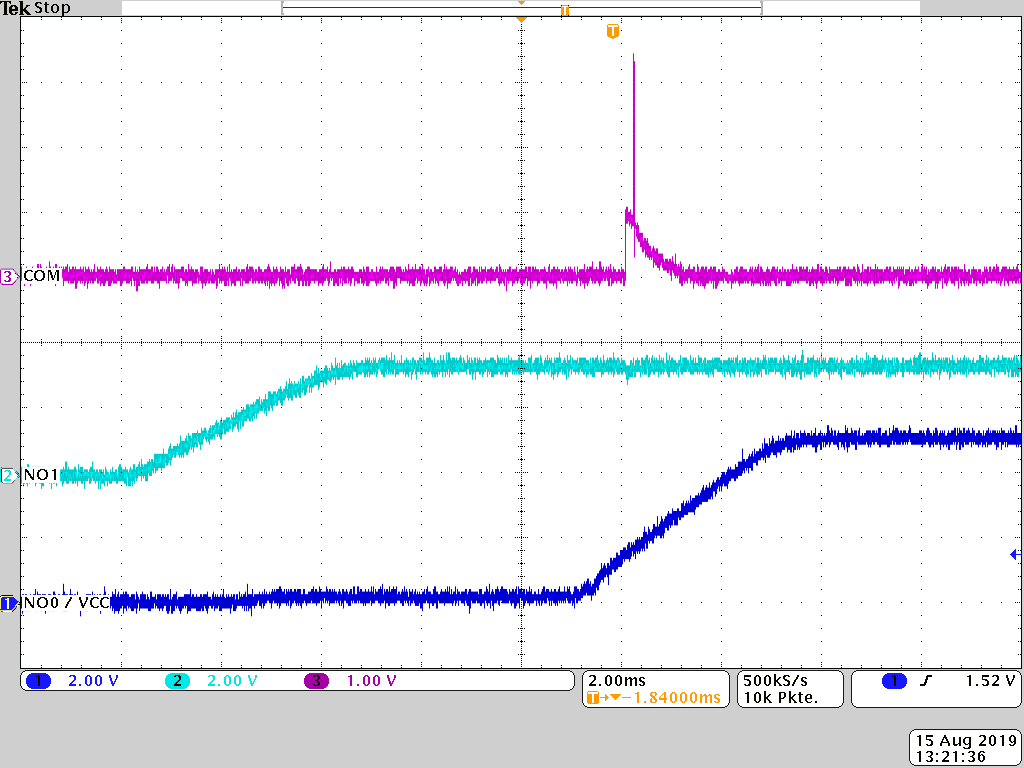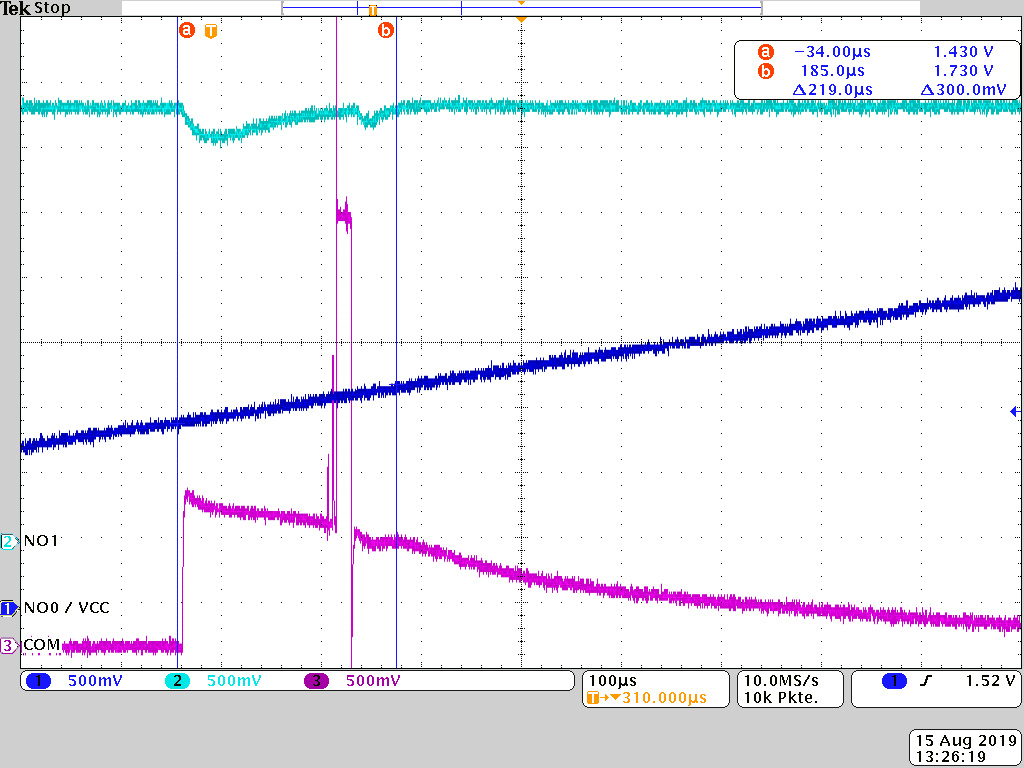Dear TI Experts,
I am wondering about the data sheet of the TS5A3359.
On the one hand, the TS5A3359 features "Isolation in Power-Down Mode". This is explained as follows (Chapter 8.3 page 22):
"When power is not supplied to the VCC pin, VCC = 0 , the signal paths NO and COM are high impedance. This is
specificed in the electrical characterisitics table under the COM and NO OFF leakage current when VCC = 0.
Because the device is high impedance when it is not powered, you may connect other signals to the signal chain
without interference of the TS5A3359."
On the other hand, the allowed voltage range on the analog pins of the mux are restriced to VCC. This is in contradiction to the Power-Down Isolation feature.
Can you please expain this to me?
Regards, Niels




